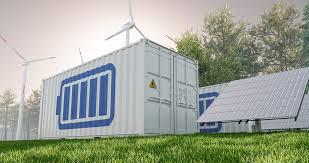
In Short : Battery Energy Storage System (BESS) costs have plummeted by 80% over the past decade, driven by advancements in lithium-ion technology and manufacturing efficiencies. The levelized cost dropped from ₹7.9 million/MWh in 2015 to ₹1.7 million/MWh in 2024. With profitability rising and deployments accelerating globally, BESS is emerging as a key enabler of clean, round-the-clock energy solutions.
In Detail : Battery Energy Storage System (BESS) costs have fallen sharply—by around 80%—over the past ten years, revolutionizing the economics of renewable energy integration. This cost drop is primarily attributed to technological advancements in lithium-ion batteries, improved manufacturing practices, and large-scale deployment that has driven economies of scale across the industry.
A report by Ember highlights that the levelized cost of a 2-hour BESS has declined from ₹7.9 million per MWh in 2015 to just ₹1.7 million per MWh in 2024. This dramatic reduction makes battery storage increasingly competitive against traditional storage options like pumped hydro or compressed air systems.
At the same time, revenues from BESS operations have surged nearly fivefold, reaching ₹2.4 million per MWh. This shift has turned battery storage into a commercially viable business, with India seeing its first profitable merchant BESS operations in 2024 and IRRs touching 17%.
Lithium-ion battery packs averaged just USD 115/kWh in 2024, thanks to the growing use of lithium iron phosphate (LFP) chemistries and the declining prices of key raw materials such as lithium carbonate. These trends have played a critical role in sustaining the momentum behind cost declines.
Globally, grid-scale battery deployments are accelerating. In 2023 alone, new installations added 42 GW of capacity—doubling the previous year’s growth—and bringing the total worldwide installed capacity to around 85 GW. Projections suggest capacity could rise more than sixfold by 2030.
With their growing affordability, BESS solutions are becoming vital for managing the intermittency of solar and wind power. They allow grid operators to shift excess generation to periods of higher demand, enhancing reliability and reducing curtailment of renewables.
The Indian market, in particular, is poised for significant growth. Experts forecast the country will become one of the largest global markets for battery storage by 2030, supported by policy incentives, falling costs, and growing peak demand needs.
Increased competitiveness is also expected to spur hybrid solar-plus-storage projects, positioning them as cost-effective alternatives to new coal or natural gas-based generation. This shift is likely to accelerate India’s energy transition and reduce dependency on fossil fuels.
BESS is rapidly evolving into a cornerstone of clean energy infrastructure. As the market matures, improved economics and supportive regulatory frameworks are expected to further boost adoption, enabling a more flexible, resilient, and low-carbon electricity grid.











